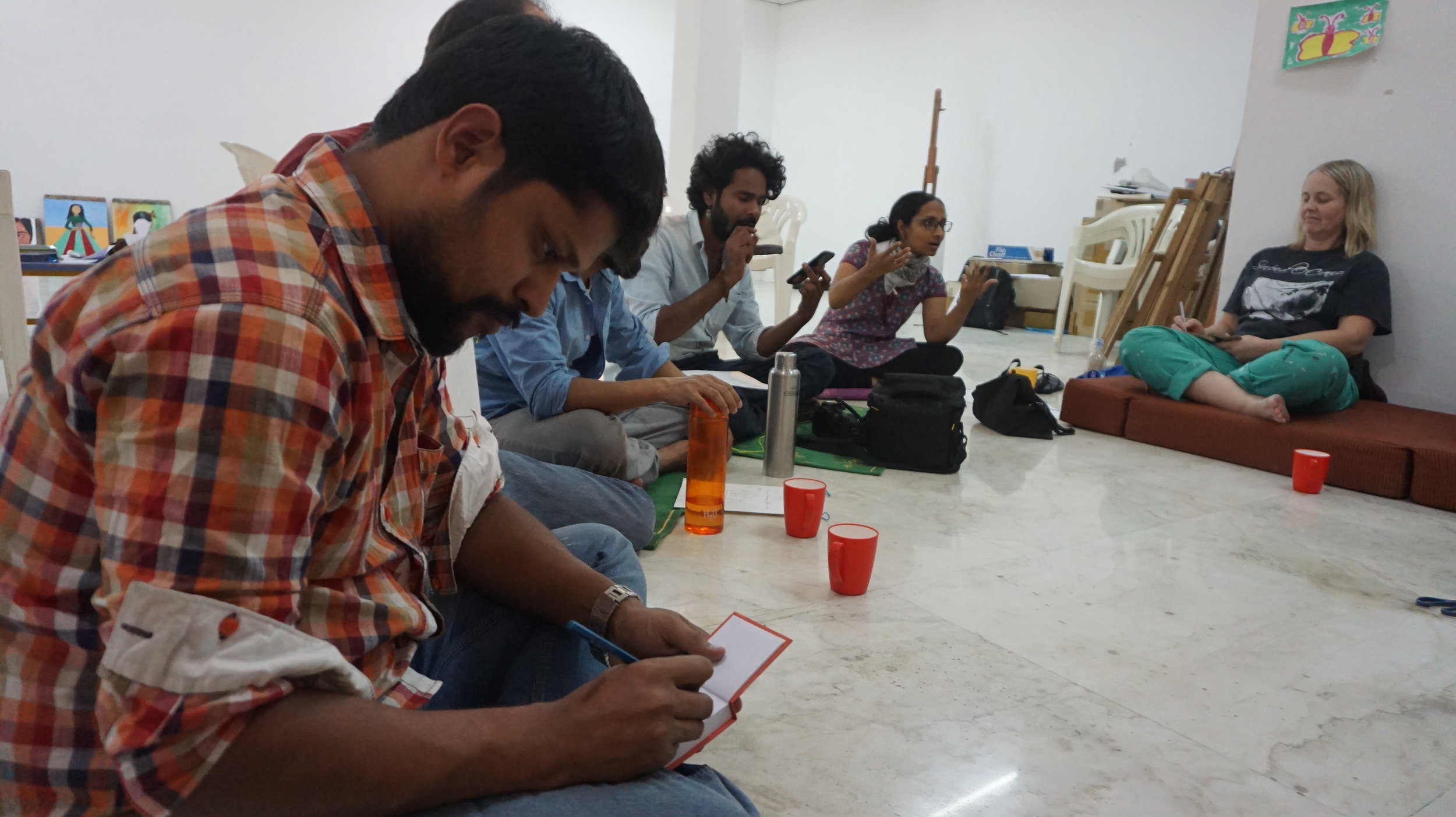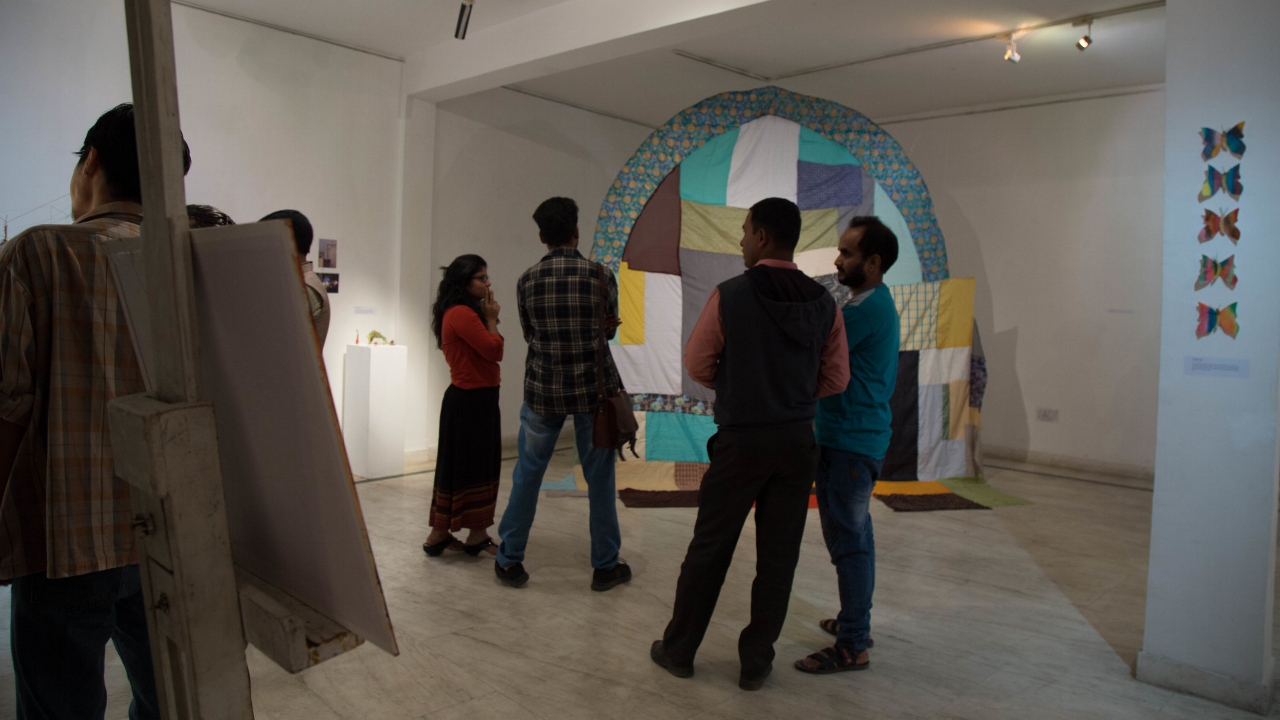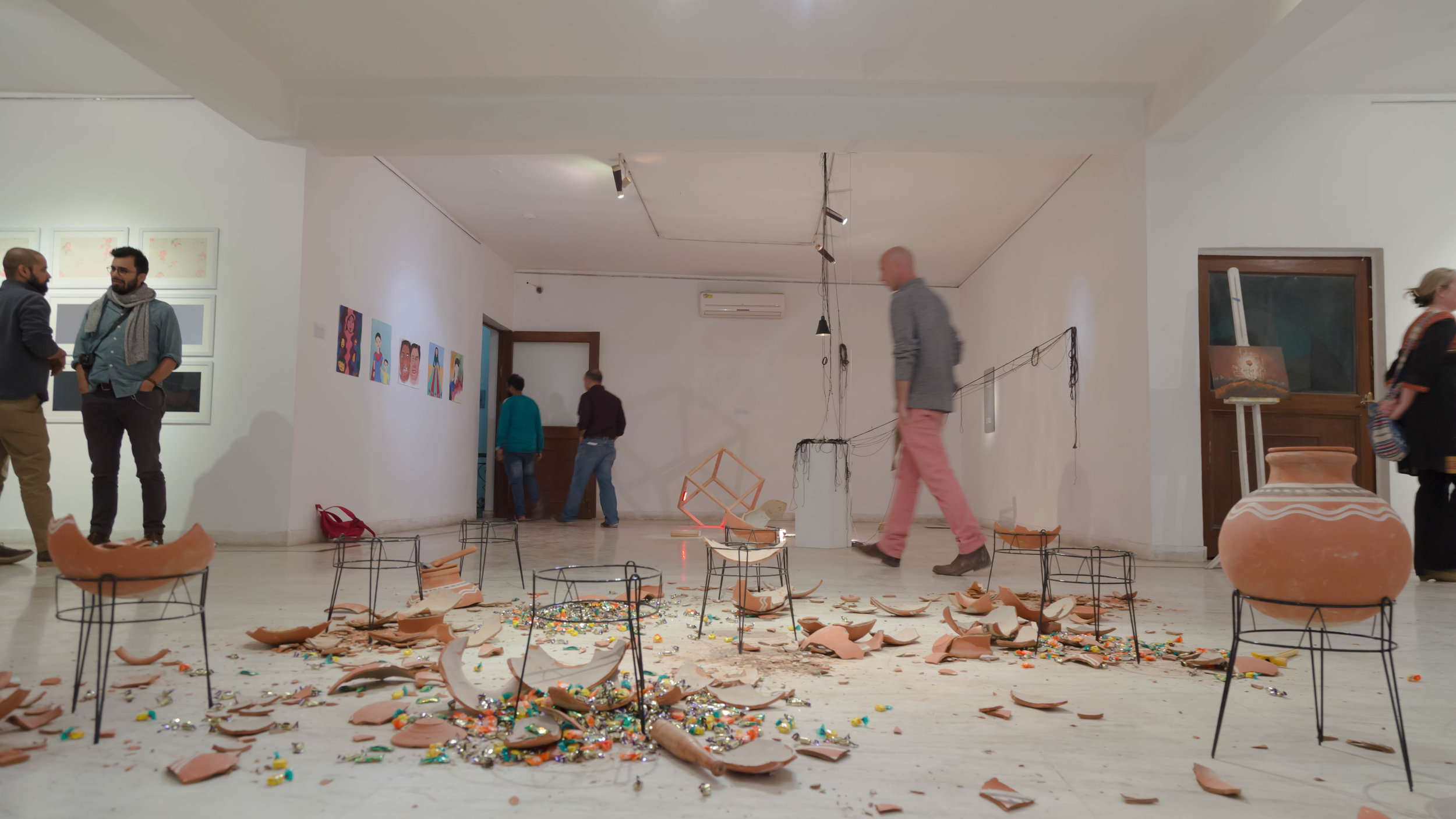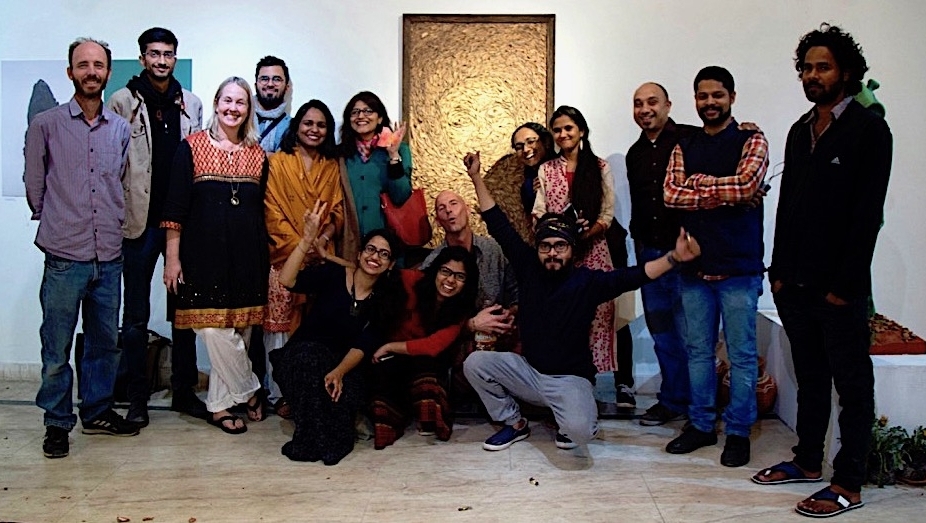The artists didn’t know what they would be making 3 weeks worth of art about.
Art for Change Foundation’s 5th annual International Artist Residency started simply with an assignment: Make a portrait with and about a young girl. The ten carefully-selected, yet somewhat hesitant artists-in-residence teamed up with five very shy, 11-15 year-old underprivileged girls. A day of art activities ended with the portrait assignment. But by the end of the day something magical had happened. The girls had come delightfully alive and the artists had connected beautifully with each.
It was only the next day that the artists-in-residence were told that the girls they had worked with were all survivors of sexual assault. Counsel to Secure Justice (CSJ), with whom Art for Change partnered for this residency, is working closely with each of the five girls to secure effective criminal and restorative justice. That following day a CSJ social worker shared the girls’ five stories. These ranged from incest to the experience of one girl getting kidnapped by a criminal gang, repeatedly raped over a period of a week, imprisoned in a cellar next to dead bodies, taken outside and shot, and then thrown into a well. And yet she survived, and not having been told which story belonged to which girl, for the vibrant resilience and irrepressible spirit of each of them, we couldn’t have figured it out!
Yet it was that opening to the residency, reconciling the knowledge of the second day with the lives of the first day—that opportunity to engage with a precious human life without it being defined by a single event or the encumbrance of the past—that launched the artists into three weeks of discussion and creativity around the theme: ‘The Beauty of Who I am.
Rather than responding directly to the issue of child sexual abuse our and CSJ’s aim was for the artist, and their art, to ask the bigger questions: What is justice? What is restoration? What is beauty? What is the value of a human life? Ultimately, what does it mean to be human.
Over the next three weeks, through a process of working individually in a large common studio space and reflecting collectively during daily ‘chai-time’ discussions, the artists produced a moving range of paintings, sculptures, photos, installations, and performances.










One artist created a walk-in installation she called Concealment, a beautiful mosaic of brand new cloth-scraps discarded by a local tailor which she collected, sowed together, and hung in a corner. In addition to the power of the symbolism, as a viewer the protective semi-transparent barrier hid you, while allowing you to quietly observe the rest of the room. Another artist, drawing on Indian mythology, created an interactive board game that played with the idea of ‘safety’ as a parody of society’s responses to sexual assault. Other works dealt with forgiveness, resilience, trust, inner-vs-outer beauty, and more. One artist wrestled from the beginning with the idea of beauty itself, questioning the assumption that every human being is inherently valuable, particularly when faced with the evil of the aggressor. He ended up making an installation projecting a digital clock through an acrylic curtain along with the poet Kabir’s words “The river that flows in you, flows through me, too”. He himself sat behind it, completely hidden under a black cover except for one hole revealing his tapping finger. The piece captured a sense of being caught in time, stuck in that space between hope and hopelessness. His tapping finger, as he explained it, was both his waiting, and his complicity in not doing anything.
The Residency ended with a well-attended public exhibition. But a few hours prior to that we held a special private viewing exclusively for the five girls. The artists proudly gave them a tour of a body of work that had been inspired by them, and in some cases made for them as the primary audience. One installation was completed only when the artist gave the girls hammers to break open clay pots revealed to be full of sweets, each with a flower at its center, all of which they were to take home—an act of symbolic, prophetic, cathartic reversal of past injustice. Not only had our lives been deeply touched by those of the girls but, as the CSJ social workers shared afterwards, they too, had been deeply encouraged and honored.


